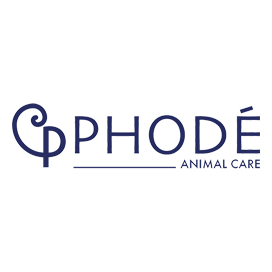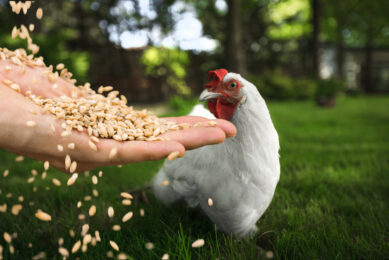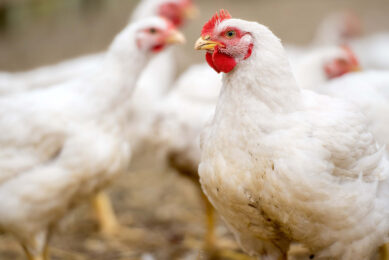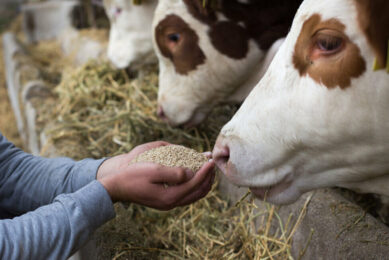Understanding the power of spice extracts for better rumen health
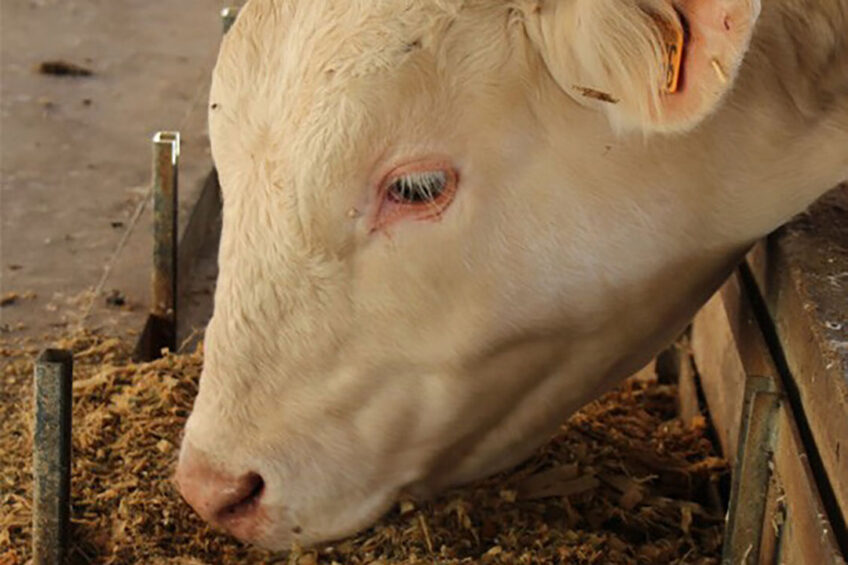
Climate, type of diet, stress and competition at the trough can all influence feeding behaviour. A drop in chewing and rumination impairs the ruminant’s ability to manage ruminal pH by secreting saliva rich in buffering substances. How to counterbalance this negative effect by implementing a feeding strategy?
Saliva production in ruminants
Ruminants have two types of salivary glands. Type I glands continuously produce saliva to hydrate the digestive tract, while type II glands secrete saliva, which is particularly rich in endogenous buffering substances, only during chewing: during ingestion and rumination. The secretion of this ingestion saliva can also be modified by stimuli in the oral cavity. Particular receptors TRPV1 (transient receptor potential vanilloid type 1) are a non-selective ion channel that, in response to a stimulus, induces an inward flow of cations, calcium and sodium, which results in depolarization of the cell. A nervous message passing through the brain stem goes to the serous cells in the acini of the parotid and sublingual salivary glands to increase saliva flow. In the excretory duct, exchanges of chlorine and sodium with potassium and bicarbonates result in the change of a primary saliva into a final saliva rich in buffers.
Naturally promoting saliva production
Spice extracts from capsicum, black pepper, zingiber and curcuma are known to induce a feeling of heat in the mouth. Their chemical structure activates the TRPV1 receptors, increasing then saliva flow. This effect is the one sought using those natural extracts in ruminants. Just a few grams are enough to see a response in dairy cows. Scientific studies have shown that the daily flow of saliva increases by 27% in the presence of an association of characterized spice extracts (SE; Oleobiotec Saliva Promoter; Table 1). A meta-analysis of 48 scientific articles highlights the positive correlation between an increase in salivary flow (l/kg dry matter intake) and an increase in ruminal pH, which supports a good rumen balance.
A case-study in fattening beef cattle
A trial was conducted to assess whether spice extract – SE (Oleobiotec Saliva Promoter) could modulate behaviour and digestion in fattening bulls, and whether the dose would modify the response. 8 bulls (427kg BW) were enrolled in the study. They received a total mixed ration rich in non-structural carbohydrates (in dry matter: 62% corn silage, 22% barley, 16% soybean meal, 1% minerals) without (Control) or with spice extracts (SE) homogeneously included at 0.5 g/d (SE0.5), 1.0 g/d (SE1.0), or 2.0 g/d (SE2.0). It was individually adjusted on dry matter intake defined as1.88% BW and divided in 2 daily equal meals in the morning and in the afternoon.
The acid buffering capacity (aBC) of saliva
Saliva was sampled to measure aBC, minerals and HCO3- concentrations. Spice extracts effect on saliva composition was assessed using multidimensional descriptive analysis and through analysis of variance and regressions.
Saliva composition differed gradually with the dose of spice extracts in the diet. Three parameters drew the attention: aBC, bicarbonates and sodium (Figure 1). The concentrations in [HCO3-] and [Na+] were positively correlated to saliva aBC. In addition, the higher aBC was associated with numerically lower amplitude of ruminal pH over 24 hours. Ruminal pH drop after the morning meal was longer when bulls were fed the Control diet compared to the spice extracts-containing diets.
Figure 1 – Saliva composition differs with the dose of spice extracts.
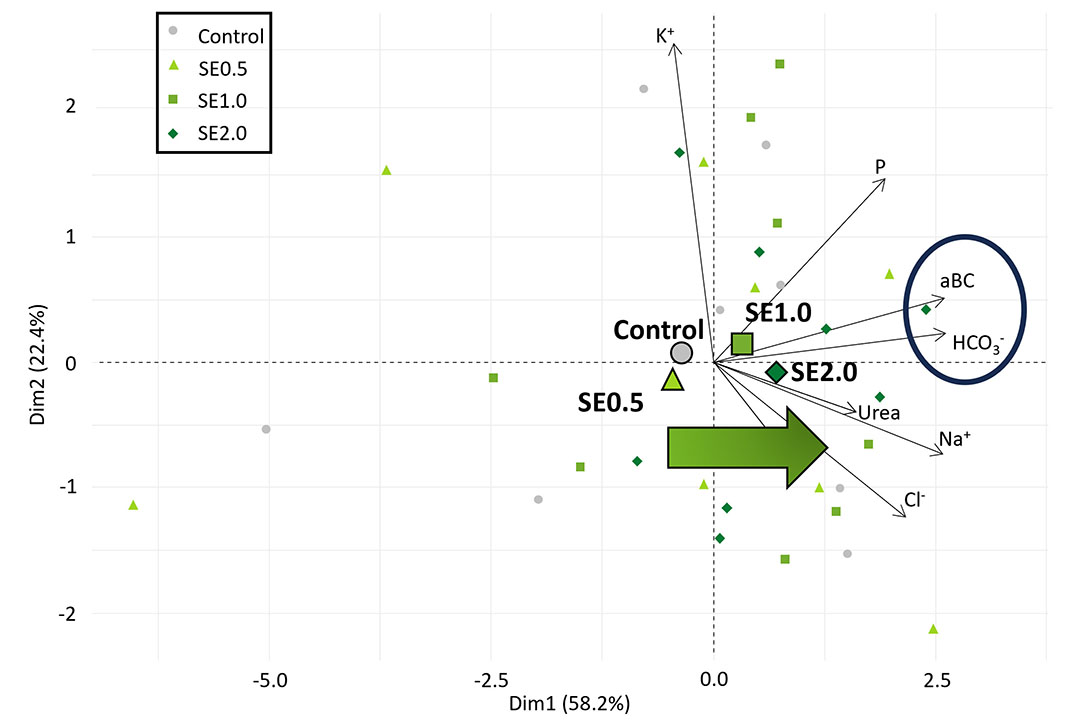
Duration of pH decrease after the meal and duration of ingestion both fitted a quadratic model (Figure 2). This different postprandial pH pattern may be explained by differences between diets with or without spice extracts in the rumination kinetics between 9:00am and 2:00pm. Time spent ruminating was higher with spice extracts-containing rations.
Figure 2 – Effects of spice extracts dose on the durations of the meal and ruminal pH drop after the morning meal.
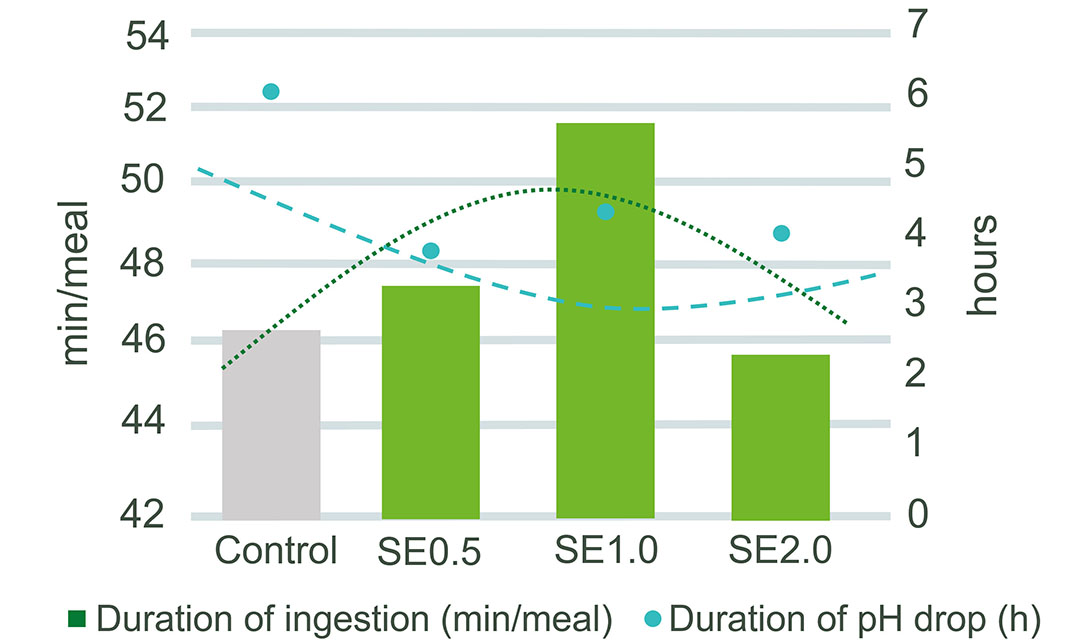
The quicker the drop in pH, the higher the amylolytic activity
Low ruminal pH is associated to reduced cellulolytic activity but increased amylolytic activity: an environment that favours starch digestion and lowers fibre degradation. Yet, in the present study, the ruminal content showed less presence of fibres with spice extracts diet, meaning a better degradation of the fibres, compared to the Control diet (Figure 3). With the spice extracts, the rumen recovered a higher pH more quickly after the acidogenic meal, enabling a more efficient digestion of the fibres (requiring cellulolytic activity) afterwards. Higher chewing activity due to longer ingestion and higher rumination time may also contribute to this visual observation of the ruminal content.
Figure 3 – Effect of the spice extracts dose on the presence of fibres in the ruminal content.
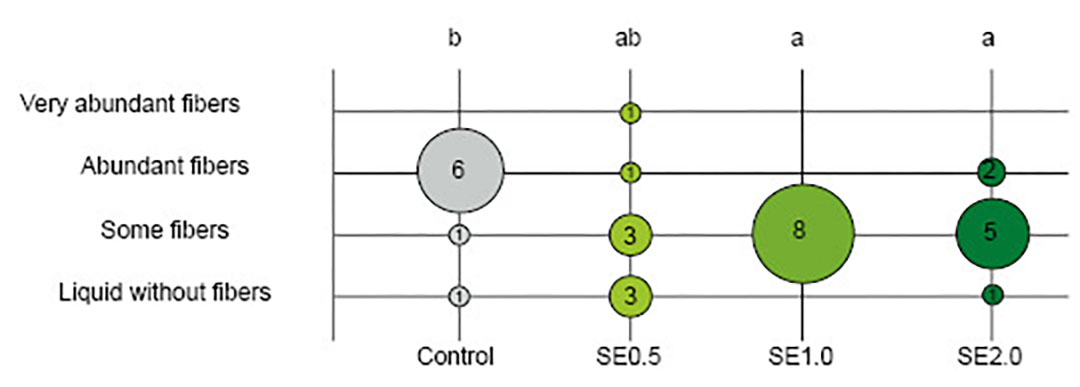
In addition, propionate, acetate, and butyrate concentrations were measured in the ruminal content three hours after the morning meal. No difference was observed in acetate and butyrate content between the treatments. However, the higher propionate concentration may be the result of the breakdown of starch accentuated with SE1.0 or at a more advanced stage 3 hours after the meal. It is possible that the greater and more rapid fall in ruminal pH after the morning meal with spice extracts, demonstrated by pH monitoring with this diet, provided a more favourable ecosystem for amylolytic microorganisms.
Recommendations
These results suggest that spice extracts added to the ration of fattening beef cattle might improve both ingestion and rumination, with benefits on the digestion. Interestingly, the effect of the tested SE was quadratic with optimal impact in fattening bulls at the dose 1.0 g/d. Growth and Feed Conversion Ratio also followed a bell curve with maximum efficiency with this dose. Considering the sense of taste in cattle could be a promising way to modulate ruminal ecosystem and zootechnical performance. The use of Oleobiotec Saliva Promoter into the diet is a natural solution to avoid economic and welfare implications due to rations rich in non-structural carbohydrates. It is recommended during feed transition and in acidogenic diets.


